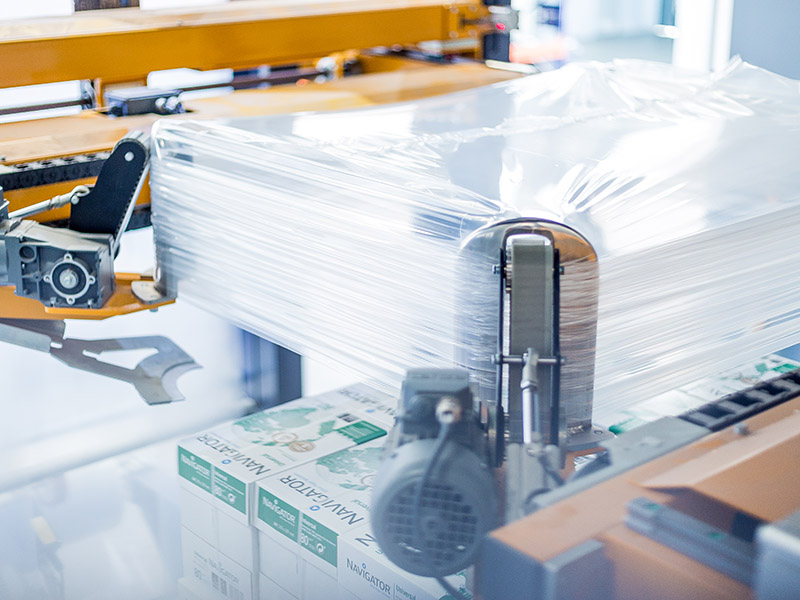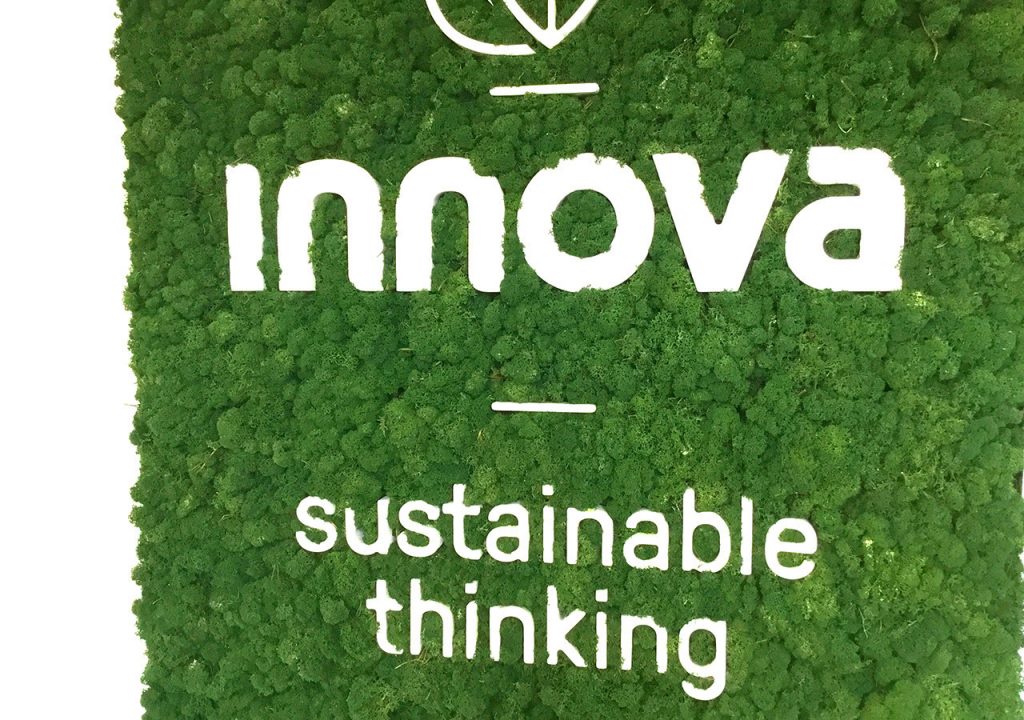Green Industry: Why do we say Stretch Hood is the most sustainable packaging system?
Caring for our planet is not only a matter of awareness and attitude, but also a working plan for manufacturing companies, which are increasingly taking responsibility for the environment. Far from being a trend or an ideal, it is already a reality for companies that optimise their processes, machinery and consumables for a more sustainable production.
When it comes to the transport and logistics area of a company, an automated packaging system can make a huge contribution to eco-responsibility just by using more efficient and environmentally friendly solutions and technologies. In this context, in today’s article we explain why Stretch Hood is the most sustainable pallet packaging system. More protection with less energy and plastic is possible.
Stretch Hood’s major advantatge
Imagine being able to pack goods with a single film layer, using as little plastic as possible, that adheres to the shape of the load and secures the product in a matter of seconds. Imagine no more, it’s possible with Stretch Hood. It is the only system that protects the load with a tubular film that adheres completely without the need for heat, as is the case with heat shrink. In a matter of seconds you are saving energy, film and CO2 emissions.
So how exactly does the Stretch Hood become more efficient and sustainable? Let’s take a closer look at the environmental benefits of the Stretch Hood.
√ Energy-efficient technology
We often mention that the Stretch Hood machine is made up of high-efficiency technology, but what is it really all about?
For a start, it is made up of energy-efficient drivers and motors that comply with European energy efficiency standards. It also uses pneumatic systems with low power consumption, an important aspect when using this type of compressed air technology.
During pauses in the packaging line, both the motors and the roller conveyor system continue to run but with minimum consumption. At the customer’s request, Innova can also deactivate elements that are not used for a certain period of time to achieve even greater energy savings.

√ Reduction of CO2 emissions
Another of the key points of the Stretch Hood compared to other systems such as shrink hooding is that it reduces CO2 emissions. Compared to the shrink oven, the Stretch Hood is more efficient in two aspects:
- Elimination of gas consumption, which, in addition to entailing higher energy use, has a price that is subject to market variations.
- Elimination of carbon dioxide emissions, caused by the shrink oven, which usually accumulate in the factory environment.
Although a resistance welding system is used in the Stretch Hood cold sheathing process, this is done with low-power electrical energy.
√ Reduction of film usage:
Stretch Hood also wins the game in the reduction of film used per wrapped pallet, not only compared to shrink wrap but also when compared to shrink wrap. The heat shrink system uses a heavier weight sleeve to withstand the heat and is larger than the Stretch Hood as it must then be shrink wrapped. In the case of the automatic stretch wrapping, it also needs more turns to be able to cover the same size pallet and also needs to include a cover to protect the top of the load.
Let’s take a look at a case study example of the use of Stretch Hood film Vs Wrapping machine, carried out by our technical team:
For a pallet of standard base dimensions Europallet and height 1000 mm, we would need:
- Stretch Hood: 457 gr of Stretch Hood film per pallet
- Automatic Wrapping Machine: 20 wraps of film with 2 trolleys (460 g) + Cover (350 gr) = 810 gr of Stretch Film.
If we were to use only 1 reel in the wrapping machine, the consumption would be 580 gr, which is still higher than Stretch Hood.
This calculation is a standard example, therefore, depending on the size and characteristics of the pallet and product, the film required may vary between the two systems.

√ Waste reduction
As well as reducing the use of film, it also eliminates waste and residues compared to other solutions. Stretch Hood film is exactly adapted to the dimensions and volume of the load, without leaving any surplus film. Compared to the other two pallet protection systems, both the stretch hood and the shrink hood tend to leave film waste, or even film that can be detached from the wrapping. The removal of the Stretch Hood film is also very neatly done without causing waste or film breakage.
√ Use of sustainable consumables
Part of a circular economy is the ability to use recyclable and/or biodegradable materials. For this reason, at Innova we provide sustainability consultancy, recommending our clients to choose recyclable and/or biodegradable consumables. In addition, in the Stretch Hood film manufacturing industry there is an increasing number of higher quality products made from recycled materials and raw materials that are more environmentally friendly.

√ Automation and lower consumption
Finally, in general, automated packaging systems allow for lower energy consumption than plants where the final packaging is done manually or semi-automatically. Our packaging systems are designed to optimise both energy and consumable usage, using exactly the film or strap required for each packaging stage. In addition, faster and faster packaging cycles mean less energy is used, making better production with very little.
As we have seen, a single pallet packaging system can make a big step forward in terms of sustainability and energy efficiency. For Innova it is important to work towards a greener industry and a planet that needs to be cared for together.
Do not hesitate to contact us for more information about efficiency and energy savings in packaging systems, we will be happy to help you.







